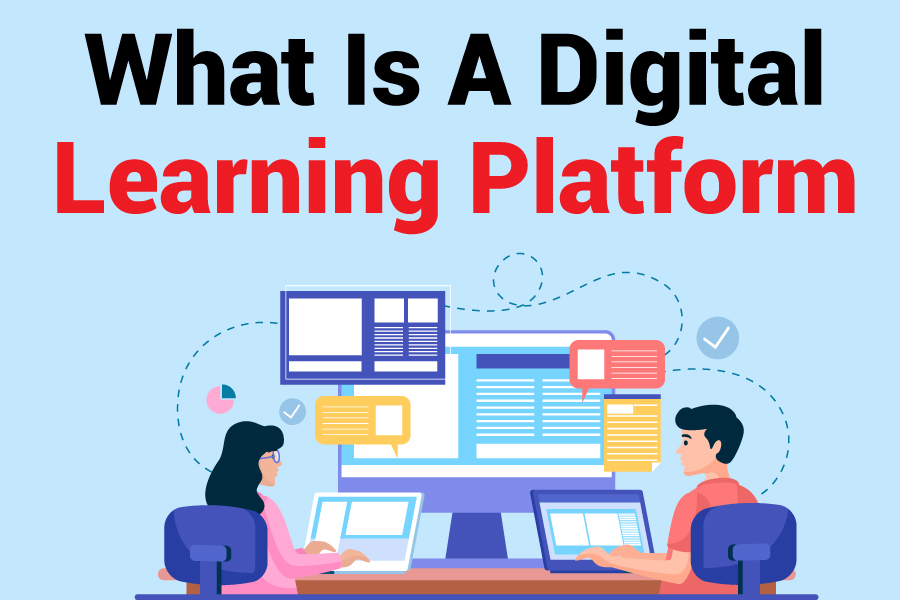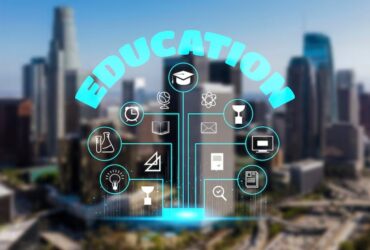In the ever-evolving landscape of education, digital learning platforms have emerged as a transformative force, revolutionizing the way we acquire knowledge and skills. As technology continues to shape our lives, these innovative platforms have become indispensable tools for learners of all ages and backgrounds. In this comprehensive guide, we delve into the world of digital learning platforms, uncovering their significance and exploring the myriad opportunities they present.
Digital learning platforms, often referred to as e-learning platforms, online learning platforms, or virtual learning environments, are web-based systems designed to facilitate the delivery of educational content and resources. These platforms serve as a centralized hub where educators, students, and administrators can seamlessly interact, collaborate, and engage in the learning process.
By leveraging cutting-edge technologies, digital learning platforms have transcended traditional classroom boundaries, offering a wealth of features and functionalities that cater to diverse learning needs and preferences. From interactive multimedia content to real-time communication tools, these platforms have redefined the educational experience, empowering learners to take control of their learning journeys.
Advantages Of Using A Digital Learning Platform
The adoption of digital learning platforms has brought about numerous advantages, transforming the educational landscape and providing learners with unparalleled opportunities. Here are some of the key benefits:
Flexibility and Accessibility: Digital learning platforms offer unparalleled flexibility, allowing learners to access educational resources anytime, anywhere, and at their own pace. This flexibility is particularly beneficial for individuals with busy schedules, geographical constraints, or specific learning needs.
Personalized Learning Experiences: Many digital learning platforms incorporate adaptive learning technologies, tailoring the content and pace to individual learners’ strengths, weaknesses, and preferences. This personalized approach enhances engagement, retention, and overall learning outcomes.
Collaborative and Interactive Learning: Digital learning platforms foster collaboration and interaction among learners, instructors, and peers. Features such as discussion forums, virtual classrooms, and group projects promote active participation, knowledge sharing, and the development of critical thinking skills.
Cost-Effectiveness: By eliminating the need for physical infrastructure and reducing associated costs, digital learning platforms offer cost-effective solutions for both educational institutions and individual learners, making education more accessible and affordable.
Scalability and Reach: Digital learning platforms have the capability to reach a global audience, transcending geographical boundaries. This scalability allows educational institutions to expand their reach and provide learning opportunities to a diverse student population.
Types Of Digital Learning Platforms
Digital learning platforms come in various forms, each tailored to specific educational needs and settings. Here are some of the common types:
- Learning Management Systems (LMS): These comprehensive platforms are designed to manage and deliver online courses, track learner progress, and facilitate communication between instructors and students. Examples include Blackboard, Canvas, and Moodle.
- Massive Open Online Courses (MOOCs): MOOCs are online courses offered by universities and educational institutions, often free or at a low cost, and accessible to a global audience. Platforms like Coursera, edX, and FutureLearn host a wide range of MOOC offerings.
- Corporate Learning Platforms: These platforms are tailored for corporate training and employee development, providing a centralized space for delivering and tracking professional development programs. Examples include Cornerstone, Docebo, and Skillsoft.
- Virtual Classrooms: Virtual classroom platforms, such as Zoom, Blackboard Collaborate, and Adobe Connect, enable real-time, interactive online sessions, replicating the traditional classroom experience.
- Educational Apps and Websites: In addition to comprehensive platforms, various educational apps and websites offer specialized learning resources, interactive activities, and supplementary materials for specific subjects or age groups.
Features And Functionalities Of A Digital Learning Platform
Digital learning platforms are equipped with a wide range of features and functionalities designed to enhance the learning experience and streamline the educational process. Here are some common features:
- Content Management: Platforms allow for the creation, organization, and delivery of various types of educational content, including text-based materials, multimedia resources, interactive simulations, and assessments.
- Learning Analytics and Reporting: Advanced analytics and reporting tools provide valuable insights into learner performance, engagement, and progress, enabling data-driven decision-making and personalized interventions.
- Communication and Collaboration Tools: Features such as discussion forums, chat rooms, video conferencing, and virtual whiteboards facilitate real-time communication, collaboration, and knowledge sharing among learners and instructors.
- Gamification and Rewards: Incorporating game-like elements, such as badges, leaderboards, and points systems, can enhance learner motivation, engagement, and overall learning outcomes.
- Mobile Learning Support: Many digital learning platforms offer mobile-friendly interfaces or dedicated mobile apps, enabling learners to access educational resources and engage with the platform on-the-go.
- Accessibility and Assistive Technologies: Inclusive design principles and assistive technologies, such as screen readers, closed captioning, and alternative text descriptions, ensure that digital learning platforms are accessible to learners with diverse abilities and needs.
- Integration and Interoperability: Digital learning platforms often support integration with other educational tools and systems, enabling seamless data exchange and enhancing the overall learning ecosystem.
How Digital Learning Platforms Are Transforming Education
The advent of digital learning platforms has profoundly impacted the educational landscape, ushering in a paradigm shift in how we approach teaching and learning. These platforms have transformed education in several ways:
Personalized and Adaptive Learning: Digital learning platforms leverage advanced algorithms and data analytics to personalize the learning experience for each individual learner. By adapting the content, pace, and delivery methods based on learners’ strengths, weaknesses, and preferences, these platforms ensure more effective and engaging learning experiences.
Blended and Hybrid Learning Models: Digital learning platforms have facilitated the integration of online and face-to-face learning, giving rise to blended and hybrid learning models. These models combine the best of both worlds, leveraging the flexibility of online learning with the personal interactions and support of traditional classroom settings.
Lifelong Learning and Professional Development: Digital learning platforms have opened up new avenues for lifelong learning and professional development. Individuals can continuously upskill and reskill themselves by accessing a vast array of online courses, certifications, and training programs, ensuring they remain competitive in a rapidly evolving job market.
Democratization of Education: By breaking down geographical and socioeconomic barriers, digital learning platforms have democratized education, making high-quality educational resources accessible to learners worldwide, regardless of their location or financial circumstances.
Data-Driven Decision-Making: The wealth of data generated by digital learning platforms provides educators and administrators with valuable insights into learner performance, engagement, and learning outcomes. This data-driven approach enables evidence-based decision-making, facilitating continuous improvement and optimization of educational strategies.
Examples Of Popular Digital Learning Platforms
The digital learning landscape is populated with a diverse array of platforms, each offering unique features and catering to specific educational needs. Here are some examples of popular digital learning platforms:
- Coursera: A renowned MOOC platform that partners with top universities and organizations to offer a wide range of online courses, specializations, and degrees across various disciplines.
- edX: An online learning platform founded by Harvard University and MIT, offering free and paid courses, as well as professional education programs from leading universities and institutions.
- Udemy: A popular online learning marketplace where individuals and organizations can create and sell courses on a wide range of topics, from programming and design to personal development and business skills.
- Blackboard: A comprehensive learning management system (LMS) widely used by educational institutions, providing tools for course delivery, assessment, collaboration, and analytics.
- Canvas: Another widely adopted LMS, Canvas offers a user-friendly interface and robust features for online course management, grading, and communication.
- Skillshare: A platform focused on creative and entrepreneurial skills, offering a diverse range of online classes taught by experts in fields such as design, photography, business, and more.
- LinkedIn Learning (formerly Lynda.com): A professional development platform offering thousands of online courses and video tutorials in various business, technology, and creative fields.
Future Trends In Digital Learning Platforms
The digital learning landscape is constantly evolving, driven by technological advancements and changing educational needs. Here are some emerging trends that are shaping the future of digital learning platforms:
Artificial Intelligence And Machine Learning
AI and machine learning technologies are being integrated into digital learning platforms to provide personalized and adaptive learning experiences, intelligent tutoring systems, and automated grading and feedback mechanisms.
Virtual And Augmented Reality
Immersive technologies like virtual reality (VR) and augmented reality (AR) are enhancing the learning experience by creating engaging and interactive simulations, virtual field trips, and hands-on training scenarios.
Learning Analytics And Adaptive Learning
Advanced learning analytics and adaptive learning algorithms will continue to play a crucial role in tailoring educational content and delivery methods to individual learners’ needs, preferences, and learning styles.
Microlearning And Bite-Sized Content
To cater to the modern learner’s shorter attention spans and on-the-go lifestyles, digital learning platforms are embracing microlearning and bite-sized content, delivering educational materials in concise and easily digestible formats.
Social Learning And Collaborative Environments
Digital learning platforms are increasingly incorporating social learning features, such as discussion forums, peer-to-peer collaboration tools, and virtual study groups, fostering a sense of community and enabling learners to learn from one another.
Gamification And Immersive Learning Experiences
Gamification techniques, such as badges, leaderboards, and interactive simulations, are being integrated into digital learning platforms to enhance learner motivation, engagement, and retention.
Mobile Learning And Responsive Design
As mobile devices become more prevalent, digital learning platforms are prioritizing mobile-friendly interfaces and responsive design, enabling seamless access to educational resources on the go.
Conclusion
In the ever-evolving landscape of education, digital learning platforms have emerged as powerful tools, revolutionizing the way we acquire knowledge and skills. These innovative platforms offer a wealth of advantages, from flexibility and personalization to cost-effectiveness and global reach. By leveraging cutting-edge technologies and innovative features, digital learning platforms are transforming the educational experience, empowering learners to take control of their learning journeys.
As we look to the future, the integration of artificial intelligence, virtual and augmented reality, and advanced learning analytics will further enhance the capabilities of digital learning platforms, providing personalized and immersive learning experiences tailored to individual needs. Additionally, the emphasis on social learning, collaborative environments, and gamification will continue to foster engagement and motivation among learners. Embracing digital learning platforms is not merely a technological shift but a paradigm shift in how we approach education. By harnessing the power of these platforms, educational institutions, corporations, and individuals alike can unlock new opportunities for lifelong learning, professional development, and personal growth. As you embark on your digital learning journey, I encourage you to explore the vast array of digital learning platforms available and find the one that best aligns with your educational goals and preferences. Embrace the transformative potential of these platforms and unlock a world of knowledge and opportunities. Remember, continuous learning is the key to personal and professional growth in our rapidly evolving world.












































Leave a Reply